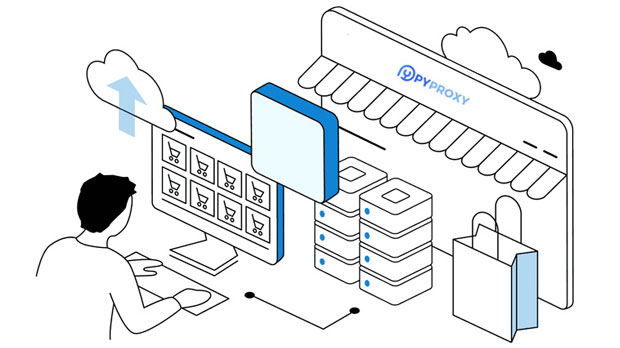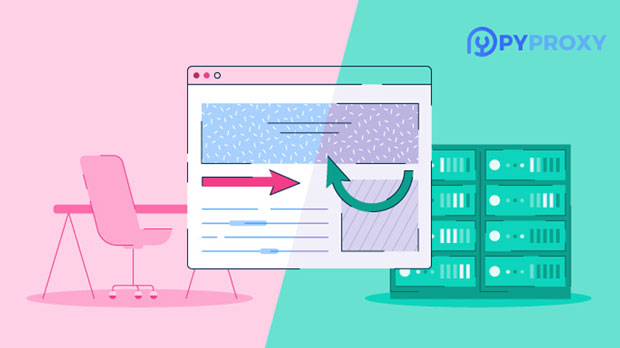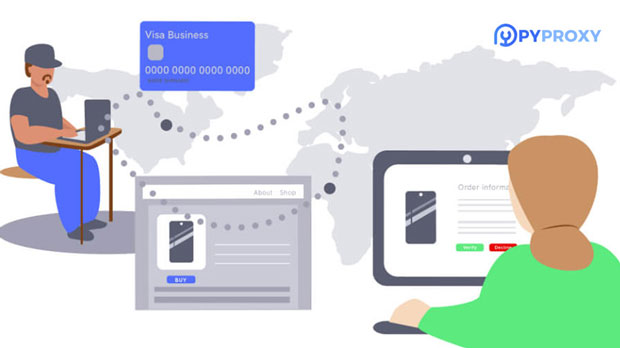When choosing a free trial socks5 proxy service, it's essential to consider factors such as security, reliability, speed, and ease of use. socks5 proxies provide an extra layer of anonymity, making them highly desirable for users who require privacy while browsing, streaming, or accessing geo-restricted content. However, not all free trials are created equal. Some may come with hidden limitations, poor performance, or security vulnerabilities. In this article, we will break down the key elements to evaluate when selecting a free trial SOCKS5 proxy service, ensuring that users can make an informed and confident decision. 1. Understand What SOCKS5 Proxy Is and Why It MattersBefore diving into the specifics of choosing a free trial SOCKS5 proxy, it’s essential to understand what SOCKS5 is and why it’s popular among privacy-conscious internet users. SOCKS5 is a type of internet protocol that routes your internet traffic through a proxy server. Unlike traditional HTTP proxies, SOCKS5 supports any kind of internet traffic, whether it's web browsing, gaming, or torrenting, offering greater flexibility and anonymity.The main reason users opt for SOCKS5 proxies is for anonymity and security. It allows you to hide your real IP address and encrypts data sent through the server, making it harder for websites and third parties to track your online activities. A free trial can help you experience these benefits without committing to a long-term subscription, but the quality of service can vary significantly.2. Assess Security FeaturesOne of the most critical factors when choosing any proxy service, especially a free trial, is security. Many free trial services come with the risk of being insecure, leaving your online activities vulnerable to interception or hacking.Here are some key security features to look out for:- Encryption: A secure SOCKS5 proxy should offer strong encryption protocols to protect your data from eavesdropping.- No-logs policy: Ensure that the service has a strict no-logs policy, meaning they do not store records of your online activities, which can be accessed by third parties or authorities.- DNS and IP Leak Protection: Check if the proxy service includes DNS leak protection and IP leak protection. These features ensure that your actual location and IP address are not exposed while using the proxy.It is important to verify the service’s security claims by reading their privacy policy or reviewing independent user reviews and testing.3. Check for Connection Speed and ReliabilityEven with the right security measures, the effectiveness of a SOCKS5 proxy largely depends on its connection speed and reliability. A slow or unreliable connection can make browsing, streaming, or gaming frustrating and inefficient.When evaluating a free trial SOCKS5 proxy, consider the following:- Speed tests: Many providers offer speed tests during the trial period. Use these tests to determine if the proxy can handle your internet activities without slowing down your connection significantly.- Server locations: A wide variety of server locations increases the chances of getting a stable and fast connection, especially when accessing content in different regions.- Bandwidth limits: Some free trials impose limits on data transfer, which may severely restrict your ability to use the proxy effectively. Be sure to check for any data caps or throttling.While free trials may come with some limitations, a good SOCKS5 proxy should still offer decent speed and stability during the trial period.4. Evaluate Ease of Use and CompatibilityA user-friendly interface and easy setup process are essential when choosing any proxy service. This is especially true for SOCKS5 proxies, which may require some technical knowledge to configure properly. A service that is difficult to set up or doesn't support your device or software can be a significant barrier to usage.When assessing a free trial SOCKS5 proxy, consider the following:- Compatibility: Make sure the proxy service supports the devices and applications you want to use, whether it’s a desktop, smartphone, or specific software like browsers or torrent clients.- Setup Process: Look for a service that offers easy-to-follow setup instructions, including tutorials, guides, or automatic configuration tools.- User Interface: The interface should be intuitive, allowing you to easily manage your connection settings, such as switching servers or enabling encryption.A seamless experience will ensure you can focus on using the service rather than dealing with technical challenges.5. Test Customer SupportCustomer support is another important factor to consider when trying a free trial SOCKS5 proxy. Although free trials typically don’t offer the same level of support as premium plans, it's still essential to assess the responsiveness and quality of customer service.Things to consider:- Availability: Does the service offer 24/7 support, or are they only available during specific hours? A SOCKS5 proxy service should provide at least some level of customer support during the trial period.- Channels: Look for a provider that offers multiple support channels such as email, live chat, or a ticketing system.- Response Time: Test their response time by reaching out with a basic question about the service. Fast and helpful responses indicate a reliable support team.Good customer support can make a big difference when troubleshooting any issues during your trial period.6. Consider the Trial Length and LimitationsFree trials typically come with some limitations, such as limited access to features, bandwidth restrictions, or a short trial period. It’s essential to understand the terms of the free trial before committing.Here are some things to check:- Trial length: The longer the trial, the more time you’ll have to test the service thoroughly. Look for trials that last at least 7-14 days.- Usage restrictions: Some free trials limit the number of servers you can access or the amount of data you can use. Make sure the trial allows you to test the core functionality of the proxy service.- Refund policies: If you decide to continue with the service after the free trial, check if there’s a money-back guarantee in case the service doesn’t meet your expectations.Knowing the limitations upfront helps you avoid surprises and ensures that the free trial gives you a fair opportunity to assess the service.7. Check Reviews and ReputationFinally, before committing to a free trial SOCKS5 proxy service, it’s always a good idea to read user reviews and look into the reputation of the service provider. User reviews can provide valuable insights into the reliability, security, and overall performance of the service.Look for reviews on independent forums, technology blogs, or user review platforms. Pay attention to feedback regarding:- Security concerns: Are there reports of data breaches or privacy issues?- Service reliability: Are users consistently happy with the performance, speed, and uptime of the service?- Customer support: How do users rate the quality and responsiveness of customer service?A provider with a solid reputation and positive reviews will give you more confidence in their service.ConclusionChoosing the right free trial SOCKS5 proxy service requires careful consideration of several factors, including security, speed, compatibility, customer support, and trial limitations. By evaluating these aspects, you can ensure that the service you choose will meet your needs, whether for browsing, streaming, or any other online activity that requires privacy and anonymity.Remember, a free trial is an opportunity to test the service in real-world conditions, so use it wisely. Take the time to assess performance, security features, and customer support to make sure you’re selecting a SOCKS5 proxy service that will work effectively for you.
Jan 06, 2025
![arrow]()



























































